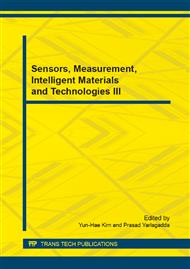p.1150
p.1160
p.1169
p.1174
p.1178
p.1185
p.1189
p.1193
p.1197
Protocol Design for Free Space Optical (FSO) Communication
Abstract:
A new transceiving protocol is designed for an FSO communication system, and it’s discussed from the transmitting protocol and the receiving protocol. Different from wired communication, a FSO system modulates the data on a narrow beam of laser transmitting through the free space or the atmosphere, and the protocol is optimized for terrestrial FSO links. Due to the complex composition and activity of the atmosphere, this signal channel brings in great influence on the transmitting laser in it. The function of the receiving protocol includes filtering and synchronizing the input serial data stream, paralleling the serial data stream, decoding the input data, error checking, and exception handling and interfacing the outer receiver with a parallel port. The transceiving protocol could be programmed into a single FPGA chip to improve system integrity and reduce the system cost. We also test the hardware platform and communication protocol and give the waveform. The experiment and Simulation prove that the protocol presented can work well at a certain bit rate scale.
Info:
Periodical:
Pages:
1178-1184
Citation:
Online since:
March 2015
Authors:
Price:
Сopyright:
© 2015 Trans Tech Publications Ltd. All Rights Reserved
Share:
Citation:


